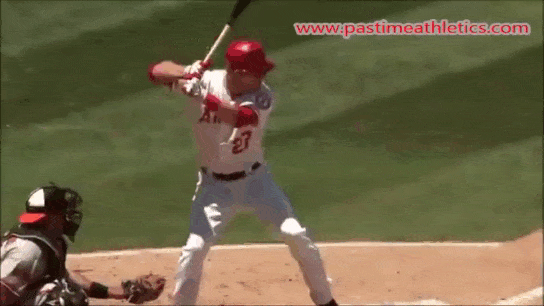Ask any kid what they want to improve at in the game of baseball, and I guarantee you that hitting will be at the top of their list. No one likes to struggle at the plate and nothing makes your kid feel like a success like getting a hit does. Every kid is different and their swing will reflect that, but there are some unchanging truths in baseball and proper swing technique is one of them. There’s a million ways to do it wrong, but only a handful of ways to do it right. Let some of these videos help you spot issues with your player’s swing and see some drills to help improve their mechanics and chances for success at the plate.
But first….when we look at a swing as coaches, we’re looking at it in phases. Not all bad swings have problems in every phase. A kid might have trouble with rotation, but have a perfect stance, stride and launch. In order to properly break down a swing we need to know the phases of the swing. See the graphic below which shows the 8 phases of a proper swing.


If we look at Mike Trout’s swing here, we notice a number of things.
First, his balance. Notice his weight is proportioned towards the rear, giving him the ability to have a front leg lift and proper stride. This is critical as it sets the timing for the rest of the kinetic chain of his swing.
Secondly, his hands. A common theme amongst all elite hitters is keeping the hands back. No mystery here, it’s essential to storing torque to allow for proper transfer of power. Trout has picture perfection form when keeping the hands back. When he strides, his left (lead) elbow is even with his right (back) hip. This is something to look for in your players. They should keep their hands back as long as possible to encourage proper separation. Note that his hands stay back but also his arms stay tight to his body. Make sure your players are not pushing their hands out and away from their body. They only need to bring them back and inline with their body.
Third, his eyes. There’s a saying that you can’t see what you can’t hit…..never more true than about baseball. From the time the ball leaves the pitcher’s hand, his eyes are locked on it all the way through his swing. He sees the point of contact and he picks up the location of the hit just before leaving the box. We’ve gotta make sure our kids are seeing the ball and the impact of the bat and ball.
Fourth, his rotation. Note the red pinstripe on the right side of his pants. You can’t see it until it appears just before impact…..meaning his back hip fired before his hands came through. This is the correct kinetic chain. Too many times, our kids will swing all arms and their rotation is late. We have to monitor that back hip firing forward. Hint…keeping the hands back is essential to proper hip firing and timing.
Lastly, his extension. Notice the front leg lock and that the forward movement of his lower half stops the moment that leg locks. This is the moment the stored energy generated by his lower half transfers up into his torso and allows for a violent rotation and whip to occur. We talk heavily about bat speed, but most of our kids think that’s a function of their arms. It’s not….it starts with the legs and hips.
When watching your player, take note that their body timing is correct and that their rotation is functional. Meaning, a lot of our kids will rotate the hips and turn their back foot because they know they should, but they do it out of time and it provides no benefit to the swing. The legs have to be used to generate power and bat speed.
 Notice many of the same things with Ken Griffey Jr.’s swing here. He has excellent balance, his hands stay back for a long time, his eyes are fixed on the ball, his rotation is in perfect time, and his extension is a result of the violent rotation and proper kinetic sequence in his body.
Notice many of the same things with Ken Griffey Jr.’s swing here. He has excellent balance, his hands stay back for a long time, his eyes are fixed on the ball, his rotation is in perfect time, and his extension is a result of the violent rotation and proper kinetic sequence in his body.
When all of these things happen properly, it takes the guess work out of our swings. The only decision our players face is should they swing and where the ball is located. We have to regularly drill their swings to give constant progress on their mechanics. We want these phases to become muscle memory for them. Try drilling them by telling them to hit one then take one. Make sure they load and stride with confidence and power every time, even when they don’t swing. Practicing this will make sure they continue to do the right things all the time.
We want to build confidence at the plate and minimize the things the kid has to think about at the plate. We have to remember that an at-bat in tournament play is a high pressure situation for these kids. Through repetition, they overcome fears and develop muscle memory.
